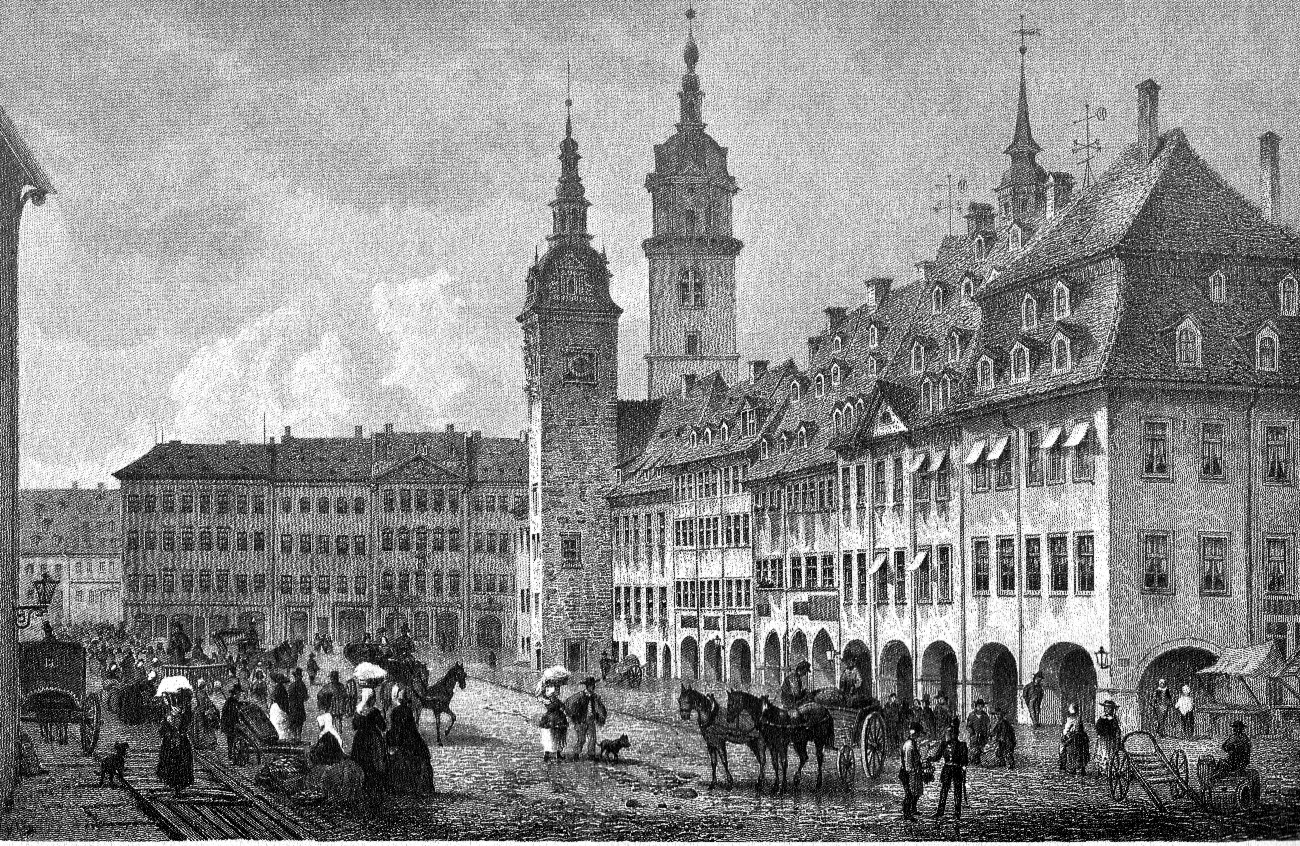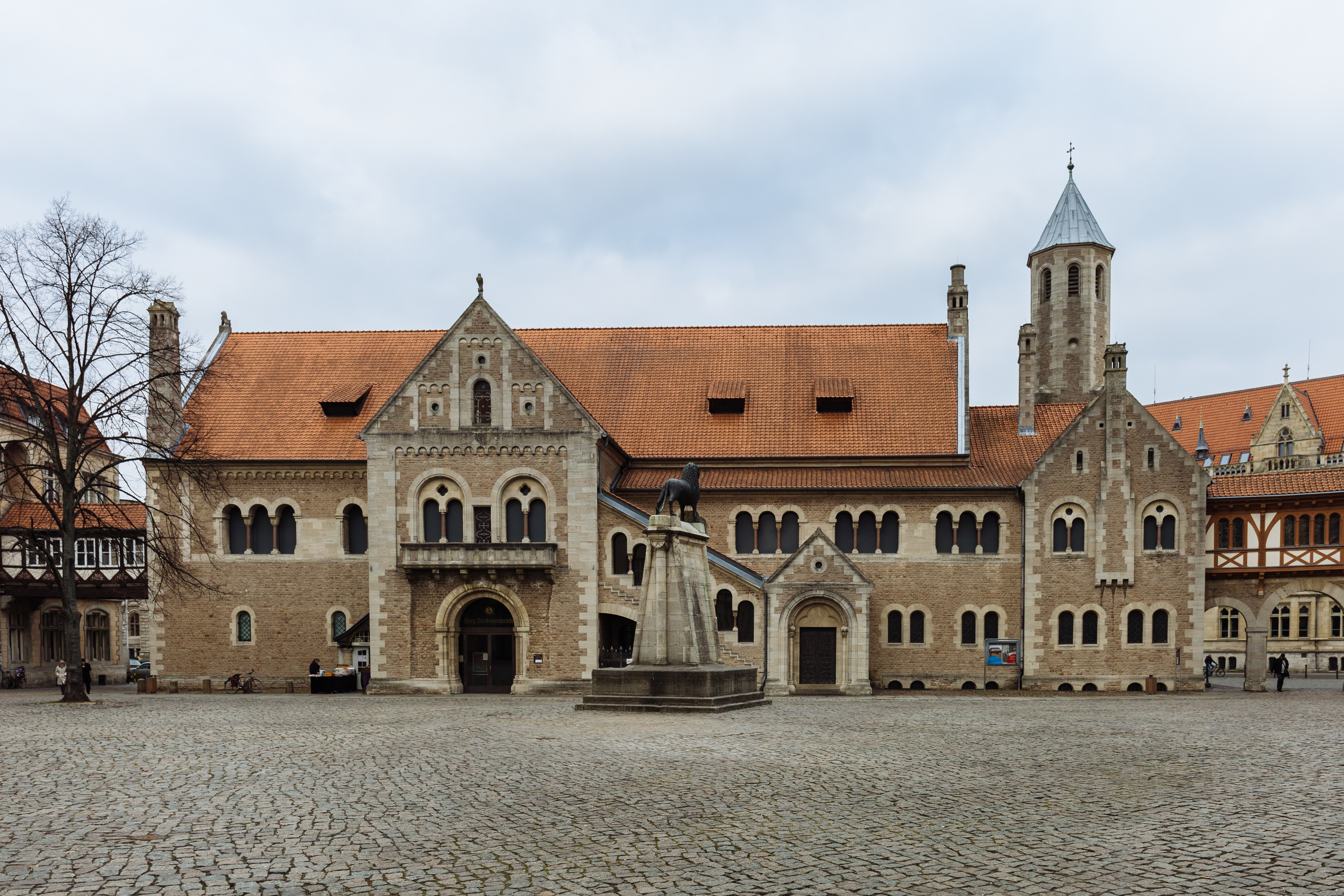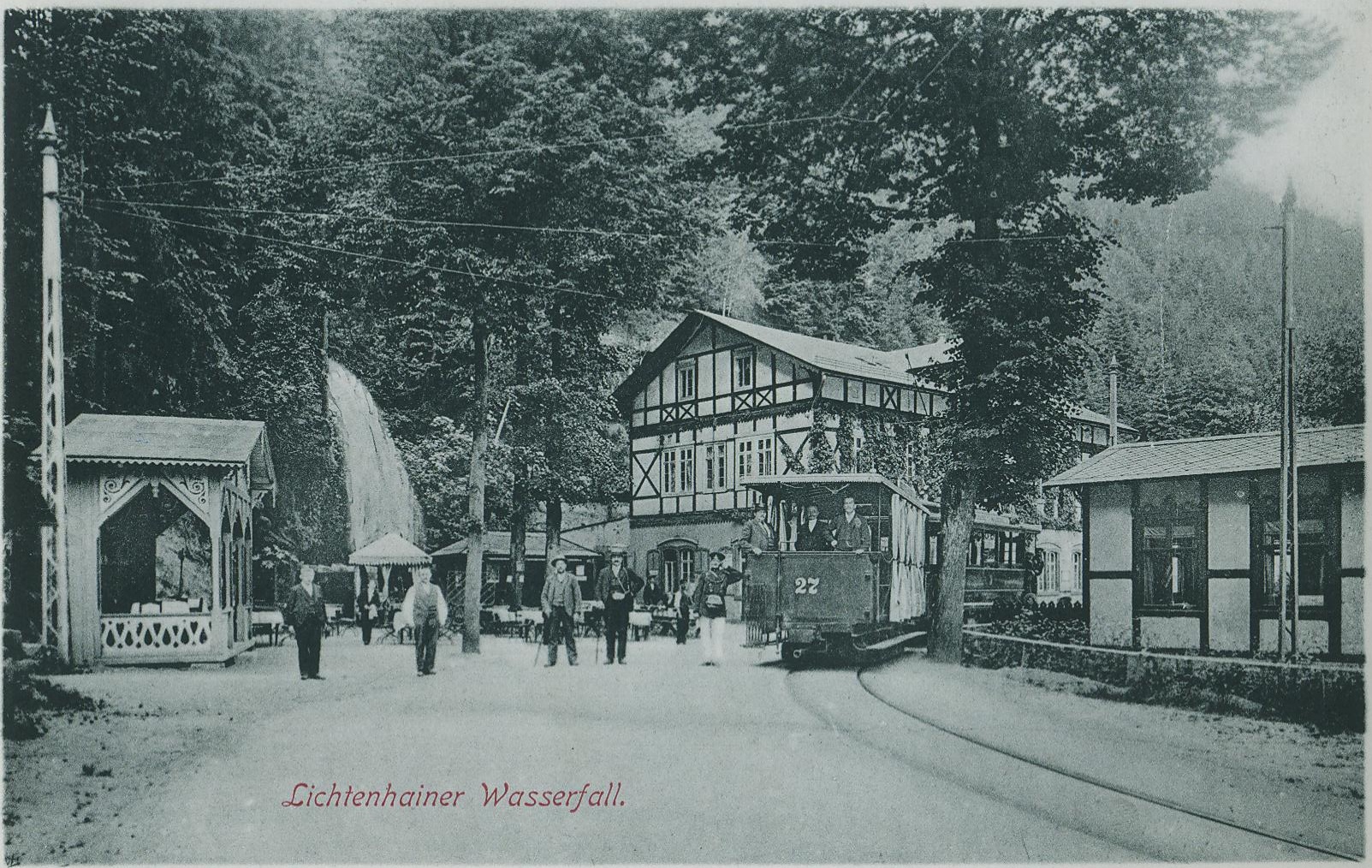|
Trams In Germany
Germany has an extensive number of tramway networks (Straßenbahn in German ()). Some of these networks have been upgraded to light rail standards, called Stadtbahn in German language, German. Straßenbahn and Stadtbahn schemes are usually operated on the legal foundation of the BOStrab, the Tramways Act of Germany. Tramways served as the primary means of urban transport in Germany until the early 1960s when they were systematically replaced by buses. However, in the 1980s tramways began to reappear; experts spoke of the 'renaissance of the tramway'. In the 1990s tramways had again become a modern means of public transport. Popular notions of fashion have been used by scholars to explain this cycle of acceptance rejection and restoration. Tramways were a highly visible manifestation of commodity culture and people projected onto them not just travel destinations but more broadly their desires, ideas and beliefs.Barbara Schmucki, "Fashion and technological change: Tramways in German ... [...More Info...] [...Related Items...] OR: [Wikipedia] [Google] [Baidu] |
Eisenbahn-Betriebsordnung
The at www.gesetze-im-internet.de. Retrieved on 19 Mar 10. ("Ordinance on the Construction and Operation of Railways" / railway regulations), abbreviated as EBO, is a German law regulation specifying rules and regulations for s. The orders are enacted by the Federal Ministry of Transport based on enabling act through the General Railway Law ("", first issued on 29. March 195 ... [...More Info...] [...Related Items...] OR: [Wikipedia] [Google] [Baidu] |
Cologne Stadtbahn
The Cologne Stadtbahn is a light rail system in the German city of Cologne, including several surrounding cities of the Cologne Bonn Region (Bergisch Gladbach, Bonn, Bornheim, Brühl, Frechen, Hürth, Leverkusen-Schlebusch, Wesseling). The term ''Stadtbahn'' denotes a system that encompasses elements of trams as well as an underground railway network (''U-Bahn'') and interurban rail, even including three lines that are licensed as heavy rail and used by freight trains as well as Stadtbahn vehicles. Two of these lines connect the Cologne Stadtbahn to the Bonn Stadtbahn. These lines (16 and 18) are jointly operated by both cities' transport authorities, resulting in both systems and the lines connecting them sometimes collectively referred to as ''Stadtbahn Rhein-Sieg''. The Cologne Stadtbahn is operated by the Kölner Verkehrsbetriebe (KVB) and the Bonn Stadtbahn is operated by the Stadtwerke Bonn (SWB – City of Bonn Utilities Division). The KVB and SWB are members of the V ... [...More Info...] [...Related Items...] OR: [Wikipedia] [Google] [Baidu] |
Chemnitz
Chemnitz (; from 1953 to 1990: Karl-Marx-Stadt (); ; ) is the third-largest city in the Germany, German States of Germany, state of Saxony after Leipzig and Dresden, and the fourth-largest city in the area of former East Germany after (East Berlin, East) Berlin, Leipzig, and Dresden. The city lies in the middle of a string of cities sitting in the densely populated northern Ore Mountain Foreland, foreland of the Elster Mountains, Elster and Ore Mountains, stretching from Plauen in the southwest via Zwickau, Chemnitz and Freiberg to Dresden in the northeast, and is part of the Central German Metropolitan Region. Located in the Ore Mountain Basin, the city is surrounded by the Ore Mountains to the south and the Central Saxon Hills, Central Saxon Hill Country to the north. The city stands on the Chemnitz River, which is formed through the confluence of the rivers Zwönitz (river), Zwönitz and Würschnitz in the borough of Altchemnitz. The name of the city as well as the names o ... [...More Info...] [...Related Items...] OR: [Wikipedia] [Google] [Baidu] |
Braunschweig
Braunschweig () or Brunswick ( ; from Low German , local dialect: ) is a List of cities and towns in Germany, city in Lower Saxony, Germany, north of the Harz Mountains at the farthest navigable point of the river Oker, which connects it to the North Sea via the rivers Aller (Germany), Aller and Weser. In 2024, it had a population of 272,417. The Braunschweig-Wolfsburg-Salzgitter region had 1.02 million residents including the cities Wolfsburg and Salzgitter, it is the second largest urban center in Lower Saxony after Hanover. The urban agglomeration of Braunschweig had a population of 551,000 with almost 45% having a migration background, making it the most diverse urban agglomeration in the whole Niedersachsen, state. The city consists of 37.5% immigrants (approximately 102,000) with a high amount of migrants coming from other European countries, Asia and Africa. 73% of the Germans residing in Braunschweig come from different parts of the country, particularly North Rhine West ... [...More Info...] [...Related Items...] OR: [Wikipedia] [Google] [Baidu] |
Bremen
Bremen (Low German also: ''Breem'' or ''Bräm''), officially the City Municipality of Bremen (, ), is the capital of the States of Germany, German state of the Bremen (state), Free Hanseatic City of Bremen (), a two-city-state consisting of the cities of Bremen and Bremerhaven. With about 577,000 inhabitants, the Hanseatic League, Hanseatic city is the List of cities in Germany by population, 11th-largest city of Germany and the second-largest city in Northern Germany after Hamburg. Bremen is the largest city on the River Weser, the longest river flowing entirely in Germany, lying some upstream from its River mouth, mouth into the North Sea at Bremerhaven, and is completely surrounded by the state of Lower Saxony. Bremen is the centre of the Northwest Metropolitan Region, which also includes the cities of Oldenburg (city), Oldenburg and Bremerhaven, and has a population of around 2.8 million people. Bremen is contiguous with the Lower Saxon towns of Delmenhorst, Stuhr, Achim, Wey ... [...More Info...] [...Related Items...] OR: [Wikipedia] [Google] [Baidu] |
Brandenburg An Der Havel
Brandenburg an der Havel (; ) is a town in Brandenburg, Germany, which served as the capital of the Margraviate of Brandenburg until it was replaced by Berlin in 1417. With a population of 72,040 (as of 2020), it is located on the banks of the Havel, River Havel. The town of Brandenburg provided the name for the medieval Prince-Bishopric of Brandenburg, Bishopric of Brandenburg, the Margraviate of Brandenburg and the current state of Brandenburg. Today, it is a small town compared to nearby Berlin but was the original nucleus of the former realms of Brandenburg and Kingdom of Prussia, Prussia. History Middle Ages The name of the city is a combination of two words ''braniti'' – to protect/defend and ''bor'' – forest/wood. Brenna, which had been a fort of the West Slavs, West Slavic tribe Stodoranie, was conquered in 929 after the Battle of Lenzen by the German King Henry the Fowler of Saxony. It was at this time first mentioned in documents as ''Brennaburg''. By the death ... [...More Info...] [...Related Items...] OR: [Wikipedia] [Google] [Baidu] |
Bonn
Bonn () is a federal city in the German state of North Rhine-Westphalia, located on the banks of the Rhine. With a population exceeding 300,000, it lies about south-southeast of Cologne, in the southernmost part of the Rhine-Ruhr region. This metropolitan area, Germany's largest, is also the second largest in the European Union by GDP, with over 11 million residents. Bonn served as the capital of West Germany from 1949 until 1990 and was the seat of government for reunified Germany until 1999, when the government relocated to Berlin. The city holds historical significance as the birthplace of Germany's current constitution, the Basic Law. Founded in the 1st century BC as a settlement of the Ubii and later part of the Roman province Germania Inferior, Bonn is among Germany's oldest cities. It was the capital city of the Electorate of Cologne from 1597 to 1794 and served as the residence of the Archbishops and Prince-electors of Cologne. The period during which Bonn was ... [...More Info...] [...Related Items...] OR: [Wikipedia] [Google] [Baidu] |
Bochum
Bochum (, ; ; ; ) is a city in North Rhine-Westphalia. With a population of 372,348 (April 2023), it is the sixth-largest city (after Cologne, Düsseldorf, Dortmund, Essen and Duisburg) in North Rhine-Westphalia, the most populous German federal state, and the 16th-largest city in Germany. On the Ruhr Heights () hill chain, between the rivers Ruhr to the south and Emscher to the north (tributaries of the Rhine), it is the second largest city of Westphalia after Dortmund, and the fourth largest city of the Ruhr after Dortmund, Essen and Duisburg. It lies at the centre of the Ruhr, Germany's largest urban area, in the Rhine-Ruhr Metropolitan Region, the second biggest metropolitan region by GDP in the European Union, and belongs to the region of Arnsberg. There are nine institutions of higher education in the city, most notably the Ruhr University Bochum (), one of the ten largest universities in Germany, and the Bochum University of Applied Sciences (). Geography Geograph ... [...More Info...] [...Related Items...] OR: [Wikipedia] [Google] [Baidu] |
Bielefeld Stadtbahn
The Bielefeld Stadtbahn is a metre gauge light rail (i.e. ''Stadtbahn'') network in the German city of Bielefeld, North Rhine-Westphalia, Germany. The system does include some segments built to rapid transit standards. It is operated by moBiel, a subsidiary of the Bielefeld municipal authority (''Stadtwerke''), and integrated in the Westfalentarif transport association. It served 32.77 million passengers in 2012. History The old tram ''(Straßenbahn)'' network was rebuilt into a three-line ''Stadtbahn (; German for 'city railway'; plural ) is a German word referring to various types of urban rail transport. One type of transport originated in the 19th century, firstly in Berlin and followed by Vienna, where rail routes were created that co ...'' (light rail) network between 1978 and 1991, with the official inauguration of the Stadtbahn in 1991. A fourth line was built to the university area and added to the network in 2002. Until 31 July 2021 four more supplemental l ... [...More Info...] [...Related Items...] OR: [Wikipedia] [Google] [Baidu] |
Berlin
Berlin ( ; ) is the Capital of Germany, capital and largest city of Germany, by both area and List of cities in Germany by population, population. With 3.7 million inhabitants, it has the List of cities in the European Union by population within city limits, highest population within its city limits of any city in the European Union. The city is also one of the states of Germany, being the List of German states by area, third smallest state in the country by area. Berlin is surrounded by the state of Brandenburg, and Brandenburg's capital Potsdam is nearby. The urban area of Berlin has a population of over 4.6 million and is therefore the most populous urban area in Germany. The Berlin/Brandenburg Metropolitan Region, Berlin-Brandenburg capital region has around 6.2 million inhabitants and is Germany's second-largest metropolitan region after the Rhine-Ruhr region, as well as the List of EU metropolitan areas by GDP, fifth-biggest metropolitan region by GDP in the European Union. ... [...More Info...] [...Related Items...] OR: [Wikipedia] [Google] [Baidu] |
Kirnitzschtal Tramway
The Kirnitzschtal tramway, also known as the ''Kirnitzschtalbahn'', is an electric tramway in Saxony, Germany. The line runs through the valley of the Kirnitzsch river in Saxon Switzerland, from the town of Bad Schandau up to the Lichtenhain Waterfall, in the municipality of Sebnitz. The line is principally a tourist service, being the only tramway to serve a List of national parks of Germany, National Park in Germany, and uses historical rolling stock built between 1925 and 1968. The line is operated by the Regionalverkehr Sächsische Schweiz-Osterzgebirge, Regionalverkehr Sächsische Schweiz-Osterzgebirge GmbH (RVSOE). This company also operates local and regional bus services in Saxon Switzerland and the adjoining ''Osterzgebirge'' (Eastern Ore Mountains), together with boat services on the Elbe river. History The first plans for the line were introduced in 1893. These were for a tramway from Bad Schandau to Kirnitzschschänke (now in the Czech Republic). The decision on th ... [...More Info...] [...Related Items...] OR: [Wikipedia] [Google] [Baidu] |






